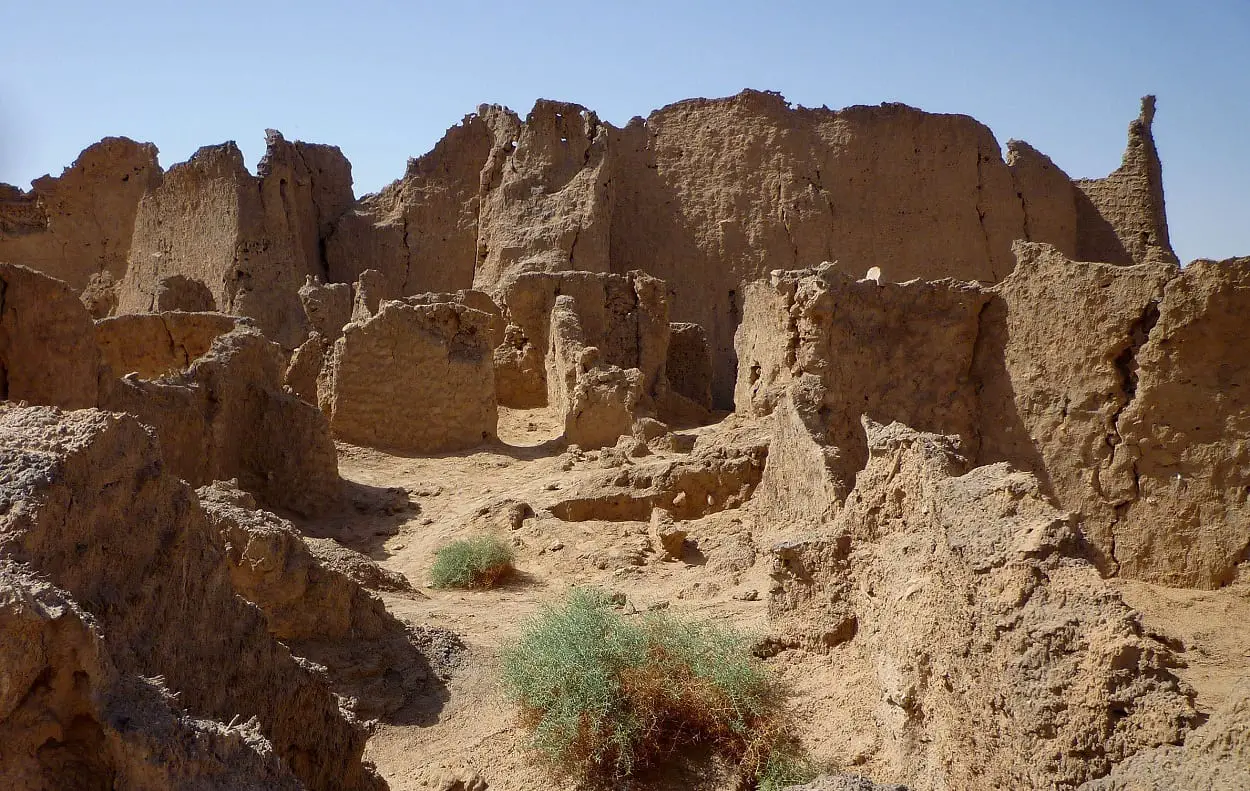Germa is the capital of the Garamantes Kingdom, an ancient civilisation located in the Fezzan region of the Sahara Desert in present-day Libya.
Although probably inhabiting the region as early as 1000 BC, the Garamantes were first mentioned around 500 BC in historical text by the ancient Greek writer and geographer Herodotus, who described them as “living in the district where the wild beasts abound” and “have four-horse chariots, in which they chase the Troglodyte Ethiopians, who of all the nations whereof any account has reached our ears are by far the swiftest of foot.”
The Garamantes emerged as a major regional power, establishing a kingdom that prospered through the enslavement of surrounding tribes, and an agricultural economy that thrived in the desert climate by constructing a complex and extensive qanat irrigation tunnel system known as foggaras.

Around the 1st century AD, the Garamantes capital was moved from the fortress of Zinchecra to Garama at the Jarma Oasis, between the great sand sea of Dahan Ubaria and the barren rock plateau of the Massak Sattafat hamada.
Comparable to classical Roman cities, Garama was a complex urban centre with monumental structures, workshops, temples, and residential buildings that could house a population of up to 4,000 inhabitants, with another 6,000 in suburban satellite villages close by.
Garama dominated the caravan trade routes of the central Sahara, enabling the Garamantes to fund campaigns against settlements across Rome’s African frontier, the Limes Tripolitanus.

In AD 203, the Roman Emperor Septimius Severus launched a campaign deep into the Sahara to bring an end to the raiding, and captured the settlements of Cydamus, Gholaia, Garbia, and Garama, expanding the Roman borders.
After the Roman border retreated, Garama continued to be occupied by the Garamantes until the 7th century AD. Contemporary accounts from the conquest of Libya by the Arab general Uqba ibn Nafi documents that around AD 668, Garama was conquered and the king of the Garamantes was imprisoned and dragged away in chains.
Header Image Credit : Franzfoto – CC BY-SA 3.0





